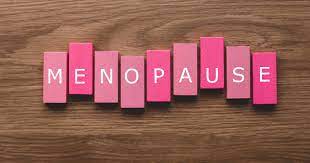In a world inundated with rapid digital communication, a groundbreaking study from researchers at New York University (NYU) sheds light on how our brains swiftly process language. The team, consisting of experts in linguistics and psychology, has found that the human brain can detect the fundamental structure of a brief sentence in as little as 150 milliseconds, roughly the time it takes to blink an eye.
The study, led by Professor Liina Pylkkänen, indicates that our cognitive abilities have adapted to keep pace with the fast delivery of messages through modern technology, such as smartphones and social media platforms. “Our experiments reveal that the brain’s language comprehension system may be able to perceive language similarly to visual scenes,” Pylkkänen explained, emphasizing that this rapid processing allows us to grasp the essence of short sentences almost instantaneously.
A Shift in Reading Habits
The transition from traditional reading to the quick consumption of digital content has changed how we process information. Notifications and brief messages now compete for our attention, leading to fragmented reading experiences. Pylkkänen notes, “This shift has made it clear that our brains not only have the ability to instinctively process rapid messages but can also make snap decisions based on them—like whether to keep or delete an email.”
But how effectively do we comprehend these quick messages? The researchers sought to answer this by investigating how our brains manage the influx of information in today’s digital age.
Experiment Insights
To explore this phenomenon, the researchers employed magnetoencephalography to measure brain activity while participants were presented with various word lists. These included grammatical sentences (e.g., “nurses clean wounds”) and random noun lists (e.g., “hearts lungs livers”). Remarkably, the left temporal cortex, which plays a crucial role in language comprehension, was able to distinguish between structured sentences and unstructured lists within 130 milliseconds of exposure.
Pylkkänen highlighted, “This speed suggests that at-a-glance sentence comprehension may resemble the rapid perception of a visual scene rather than the slower, step-by-step process we associate with spoken language.”
Detecting Errors Instantly
Interestingly, the research also found that even when sentences contained grammatical errors—such as incorrect verb agreement—the brain still managed to detect the basic structure rapidly. This was further supported by related studies, which demonstrated that minor errors in phrase structure, like word order, elicited a decrease in the brain’s rapid response. However, around 400 milliseconds after the initial presentation, the brain appeared to “correct” these mistakes, processing the sentences as if they were fully grammatical.
“This suggests that the brain not only quickly recognizes phrase structure but also automatically corrects small mistakes,” said Nigel Flower, a graduate student at NYU and co-author of the study.
Implications of the Findings
The findings from this research are profound, offering insights into the brain’s intrinsic language processing abilities, independent of traditional sequential language flow. By flashing complete sentences to participants, the researchers revealed that the brain can efficiently identify basic phrase structures, even when the meanings are nonsensical or grammatically incorrect.
These revelations hold significant implications for our understanding of language processing in the digital age, suggesting that our cognitive mechanisms are finely tuned to manage the rapid flow of information we encounter daily.
As we navigate an increasingly digital world, understanding how our brains process language can enhance our comprehension strategies and improve communication in various formats.
For more detailed insights into this research, refer to the studies published in Science Advances and the Journal of Neuroscience.
References:
- Jacqueline Fallon et al, “Language at a glance: How our brains grasp linguistic structure from parallel visual input,” Science Advances (2024).
- Nigel Flower et al, “The spatiotemporal dynamics of bottom-up and top-down processing during at-a-glance reading,” The Journal of Neuroscience (2024).










